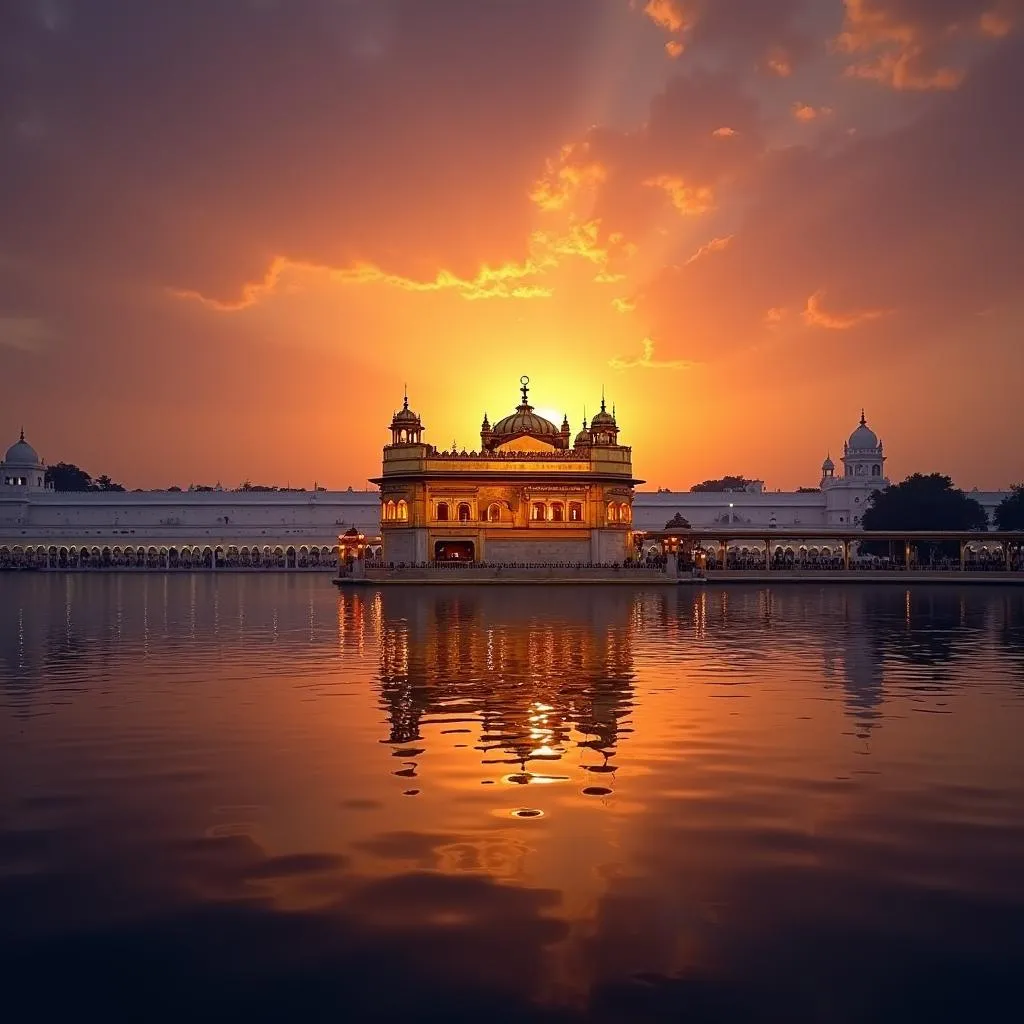The Golden Temple, also known as Kinkaku-ji, is an iconic symbol of Kyoto and a must-see for any visitor to Japan. This stunning Zen temple, with its shimmering gold leaf exterior reflected in the tranquil waters of Kyoko-chi pond, is a sight that will stay with you long after you’ve returned home. But a visit to Kinkaku-ji is more than just a feast for the eyes; it’s a journey into the heart of Japanese history, culture, and spirituality.
A Glimpse into Kinkaku-ji’s Rich History
 Golden Temple Kyoto reflected in the pond
Golden Temple Kyoto reflected in the pond
Originally built in 1397 as a retirement villa for Shogun Ashikaga Yoshimitsu, Kinkaku-ji has lived many lives. After Yoshimitsu’s death, it was converted into a Zen temple according to his will, becoming a place of quiet contemplation and meditation. The temple’s history, however, is not without its share of drama. In 1950, a fire, tragically set by a young monk, destroyed the original structure. The temple you see today, rebuilt just five years later, stands as a testament to the enduring spirit of Japanese craftsmanship and resilience.
Exploring the Golden Temple’s Architectural Splendor
Kinkaku-ji’s allure lies not only in its history but also in its breathtaking architecture. The temple is a magnificent three-story structure, each level showcasing a different architectural style.
- The first floor, called the Chamber of Dharma Net, embodies the Shinden style of the Heian period, featuring natural wood pillars and white plaster walls.
- The second floor, known as the Tower of Sound Waves, represents the Bukke style of samurai residences, characterized by its shingled roof and gilded exterior.
- Finally, the top floor, the Cupola of the Jewel Top, showcases the Zen style, with its gold leaf covering and a bronze phoenix perched atop the roof.
This harmonious blend of architectural styles, topped off with the dazzling gold leaf, creates a visual masterpiece that captivates the soul.
Beyond the Gold: The Gardens and Surroundings of Kinkaku-ji
 Stone pathway winding through a Japanese garden at the Golden Temple
Stone pathway winding through a Japanese garden at the Golden Temple
While the Golden Temple is undoubtedly the star of the show, the surrounding gardens are equally enchanting. Designed to complement the temple’s beauty, the gardens offer a serene and contemplative space for visitors to wander and reflect. As you stroll through the meticulously landscaped grounds, take note of the various ponds, islands, and stone arrangements, each strategically placed to enhance the overall harmony and spiritual ambiance of the site. Be sure to also visit the Sekkatei Tea Garden, where you can enjoy a traditional tea ceremony while soaking in the tranquility of your surroundings.
Planning Your Golden Temple Tour: Tips from a Japan Enthusiast
Ready to embark on your own Golden Temple adventure? Here are some insider tips to make your visit even more memorable:
- Time your visit: Kinkaku-ji is a popular attraction, so it’s best to arrive early in the morning or later in the afternoon to avoid the crowds.
- Allow ample time: While the temple itself is not huge, give yourself at least two hours to fully appreciate the grounds, gardens, and surrounding atmosphere.
- Consider a guided tour: To delve deeper into the history and significance of Kinkaku-ji, consider joining a guided tour. Local guides can offer fascinating insights and stories that you might not discover on your own.
“Visiting Kinkaku-ji is like stepping into a living postcard. The beauty of the temple, reflected in the still waters, is something that will stay with you forever.” – Hiroshi Sato, Kyoto Historian
 Golden Temple silhouette against a vibrant sunset
Golden Temple silhouette against a vibrant sunset
Embark on Your Golden Temple Pilgrimage
The Golden Temple is more than just a tourist destination; it’s a spiritual sanctuary that offers a glimpse into the heart of Japanese culture and aesthetics. Whether you’re drawn to its rich history, architectural brilliance, or serene surroundings, a visit to Kinkaku-ji is an unforgettable experience that will resonate with you long after you’ve left its gilded presence.
Frequently Asked Questions:
-
What is the best time of year to visit the Golden Temple?
The Golden Temple is beautiful year-round, but spring (cherry blossom season) and autumn (fall foliage) offer particularly stunning scenery. -
Is there an entrance fee to visit Kinkaku-ji?
Yes, there is a small entrance fee to access the temple grounds. -
Can I take photographs inside the Golden Temple?
Photography is not permitted inside the temple itself, but you are free to take photos of the exterior and surrounding gardens. -
How do I get to the Golden Temple from Kyoto Station?
The Golden Temple is easily accessible from Kyoto Station by bus (numbers 101 or 205) or taxi. -
Are there any restaurants or cafes near the Golden Temple?
Yes, there are several restaurants and cafes near the temple entrance where you can enjoy a meal or a refreshing drink.
Need help planning your dream trip to Japan? Contact us at 0373298888, email us at [email protected], or visit our office at 86 Cầu Giấy, Hà Nội. Our 24/7 customer service team is ready to assist you.
Leave a Reply